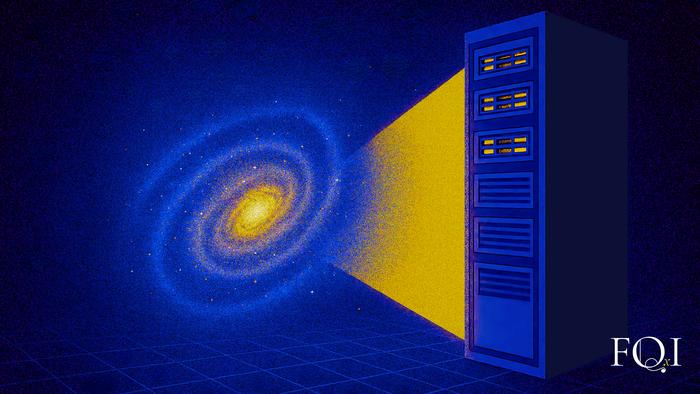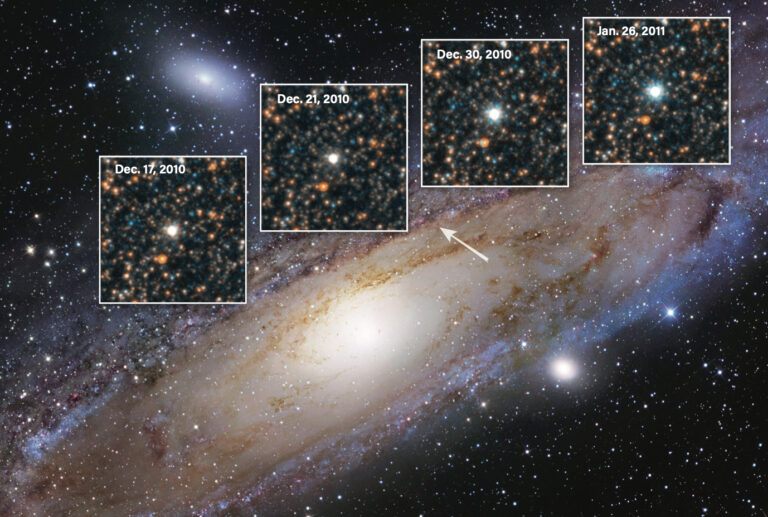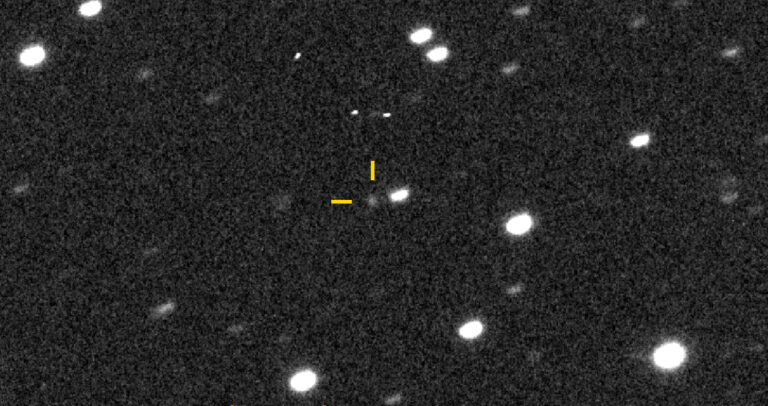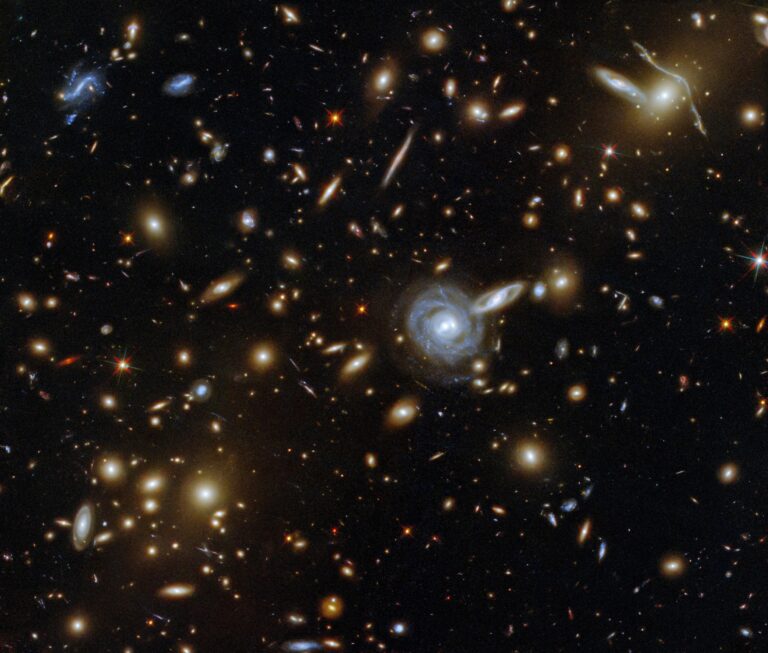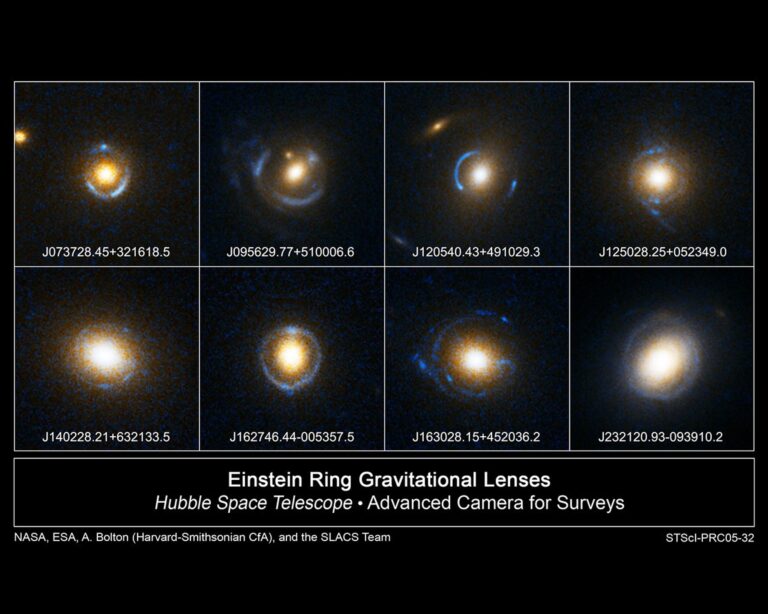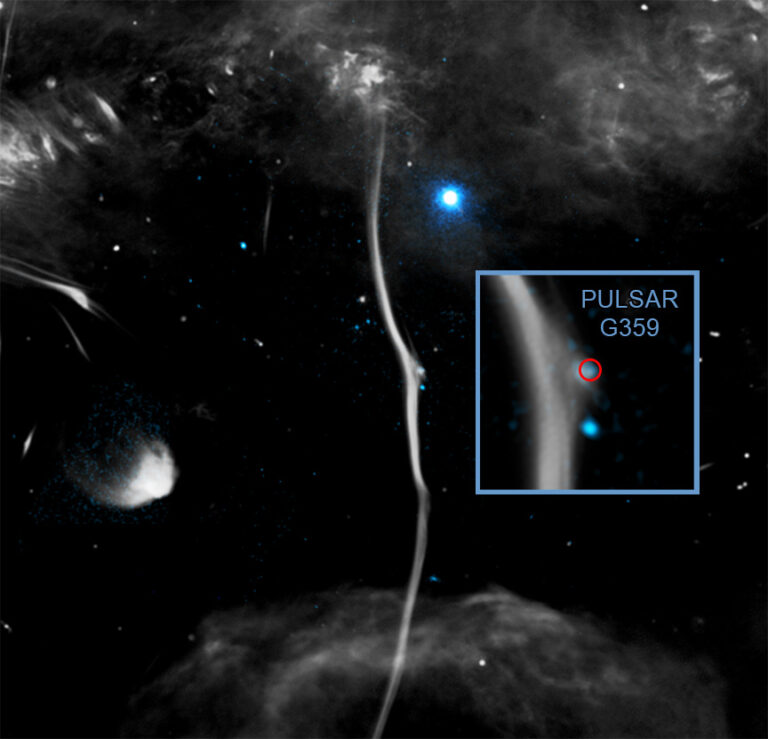Key Takeaways:
- A search for X-ray signals, hypothesized to be produced by decaying sterile neutrinos (a dark matter candidate), yielded negative results within the Milky Way galaxy.
- The study analyzed twenty years of data from dark regions of the Milky Way, expecting to find X-ray emissions indicative of sterile neutrino decay, but none were detected.
- This lack of detection does not definitively rule out sterile neutrinos as a dark matter component but challenges the hypothesis linking their decay to previously observed extragalactic X-ray signals.
- The research team plans to investigate alternative X-ray wavelengths in similar Milky Way regions to further explore the potential connection between sterile neutrinos and dark matter.
Despite knowing dark matter is out there, astrophysicists are still missing one critical detail. “We know where it is and how much of it there is, but we don’t know what it is,” says Ben Safdi, an astrophysicist at the University of Michigan.
Some think this mysterious substance is made of hypothetical subatomic particles called sterile neutrinos. Unlike regular neutrinos, which interact via both gravity and the weak nuclear force, sterile neutrinos would only interact via gravity. And that seems to be the exact same rules of engagement that dark matter follows.
For this reason, some astrophysicists have spent the past few years searching for X-ray signals that would be produced if sterile neutrinos were decaying into normal matter as hypothesized. If such X-ray signatures were found, they would suggest sterile neutrinos are a (if not the) elusive source of dark matter. And since 2014, an unexplained X-ray emission line uncovered in a number of other galaxies has kept some astronomers hopeful we might be close to finally finding a fitting candidate for dark matter.
However, after sifting through 20 years’ worth of data from the darkest, blackest regions of our own Milky Way in search of that special X-ray signal, Safdi and his research team failed to find it. That means there is currently no experimental evidence that dark matter is made of the sterile neutrino, Safdi and his team concluded in their work, published in Science. After all, if the extragalactic X-ray signal were produced by dark matter (specifically the decay of the sterile neutrino), and the Milky Way is full of dark matter, then we also should spot the signal in our own galaxy, too.

How did we discover dark matter? What is dark matter made of? How is dark matter different than dark energy? Astronomy’s free downloadable eBook, The Science Behind Dark Matter, contains everything you need to know about the elusive and invisible substance.
“We were disappointed. This is not the result we were hoping for,” Safdi says. Their results don’t mean that sterile neutrinos aren’t the source of dark matter — just that they didn’t find the X-ray signals that would suggest a connection. So now it’s back to the drawing board to see what else might link dark matter to the sterile neutrino.
Taking a closer look
Though other efforts to connect dark matter to those signals had peered into faraway galaxies, Safdi and his co-authors decided to look closer to home.
“The leap we made was that if [the X-ray signal is issuing] there, then it should also be [issuing] around our own galaxy.” The Milky Way, where our solar system resides, is surrounded by the mysterious substance, Safdi says. The team searched the absolute darkest, blankest portions of our galaxy — parts with presumably only dark matter — for the X-ray signal indicative of decaying sterile neutrinos. But they found no such signal.
It’s possible this X-ray signature appeared in other dark matter searches as a kind of contaminant, Safdi says. Looking at galaxies far away means interference from gases, stars, and other cosmic materials end up in the data. Dark matter information from our own galaxy is more pure. “We were looking for dark matter radiation on top of nothing,” Safdi says.
A new approach
Safdi and his team think that maybe other kinds of X-rays — ones with different wavelengths — might still prove that sterile neutrinos make up dark matter. They’re now applying their same research concept to these different X-rays to see if those might be radiating from the most desolate regions of the Milky Way.
“We now have this powerful method we can apply to this data,” Safdi says, “And, who knows? Maybe we’ll find evidence for dark matter.”


